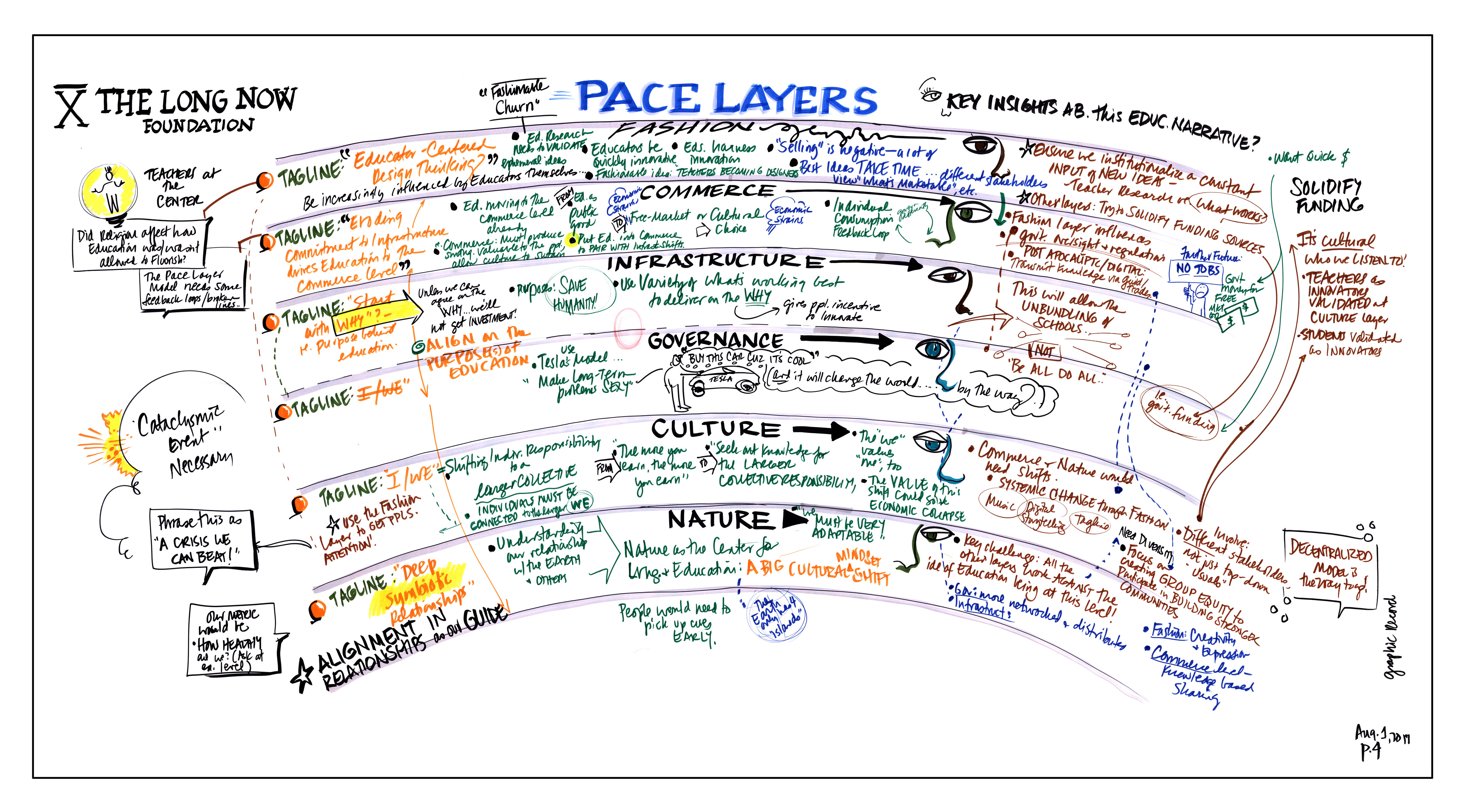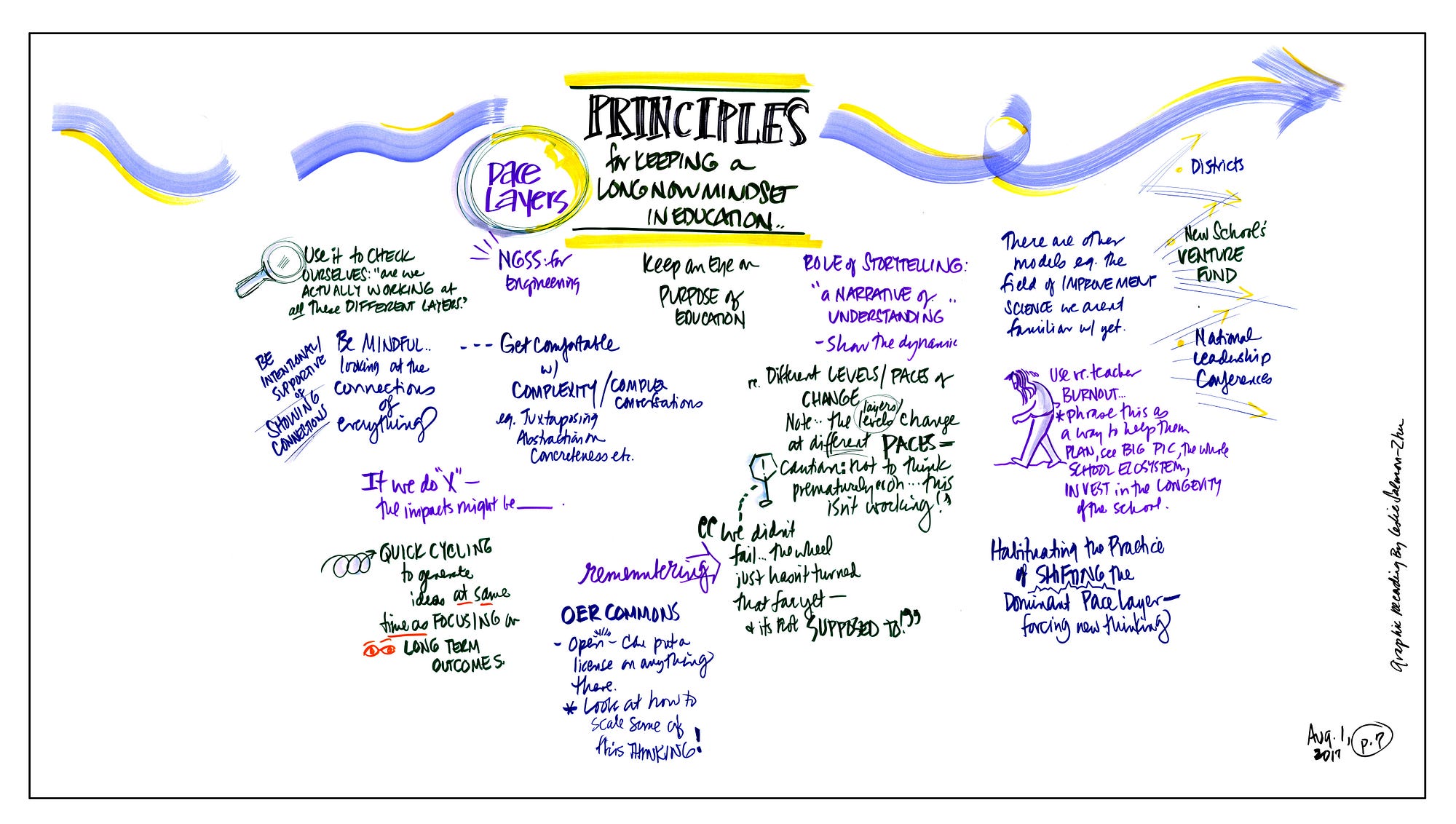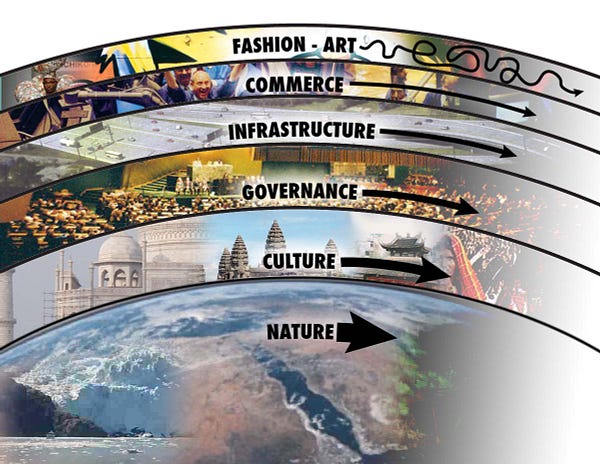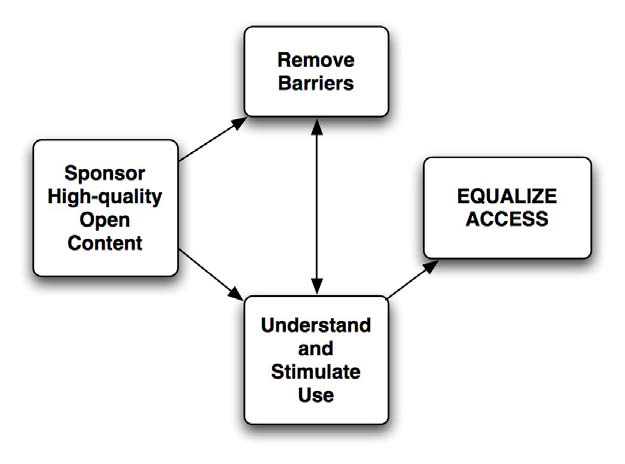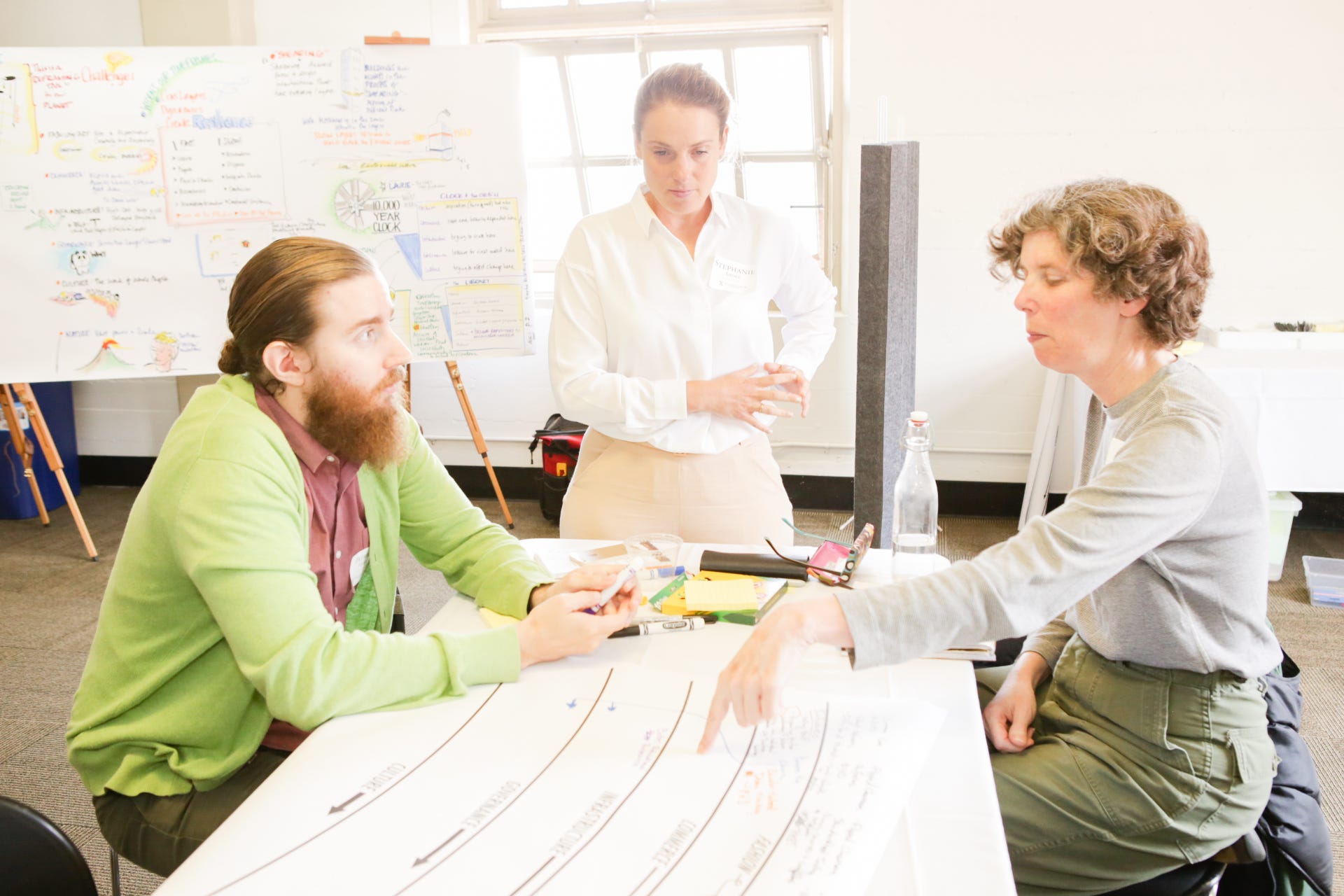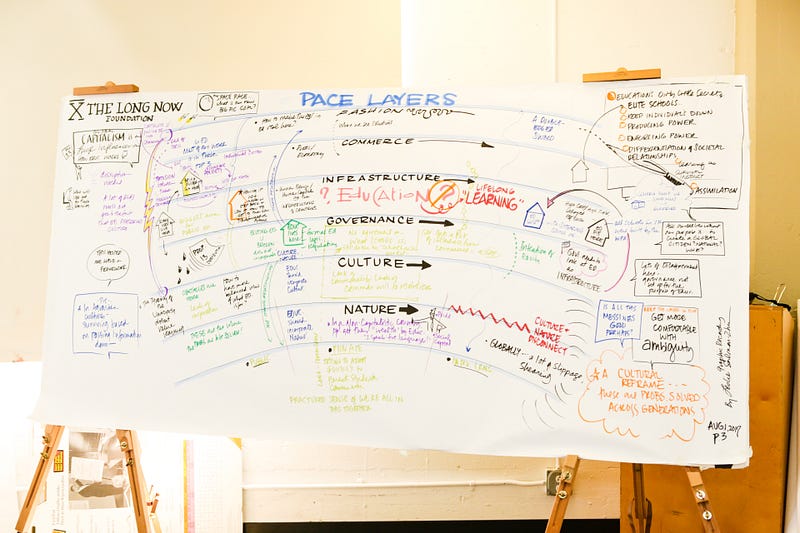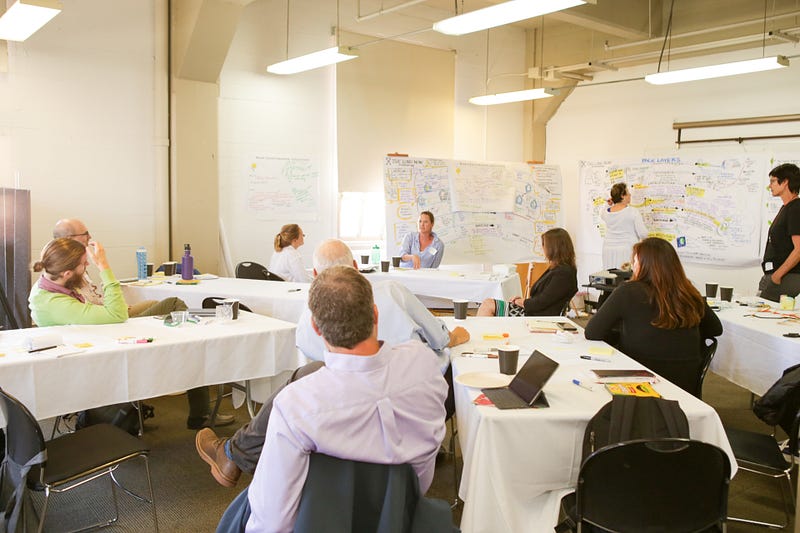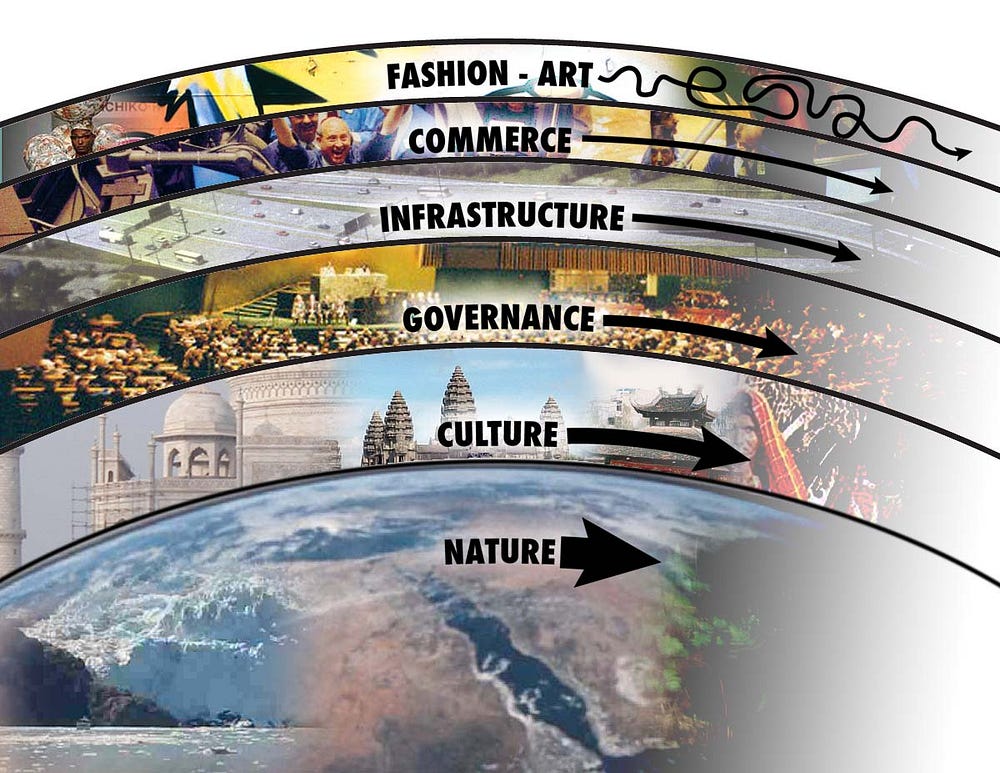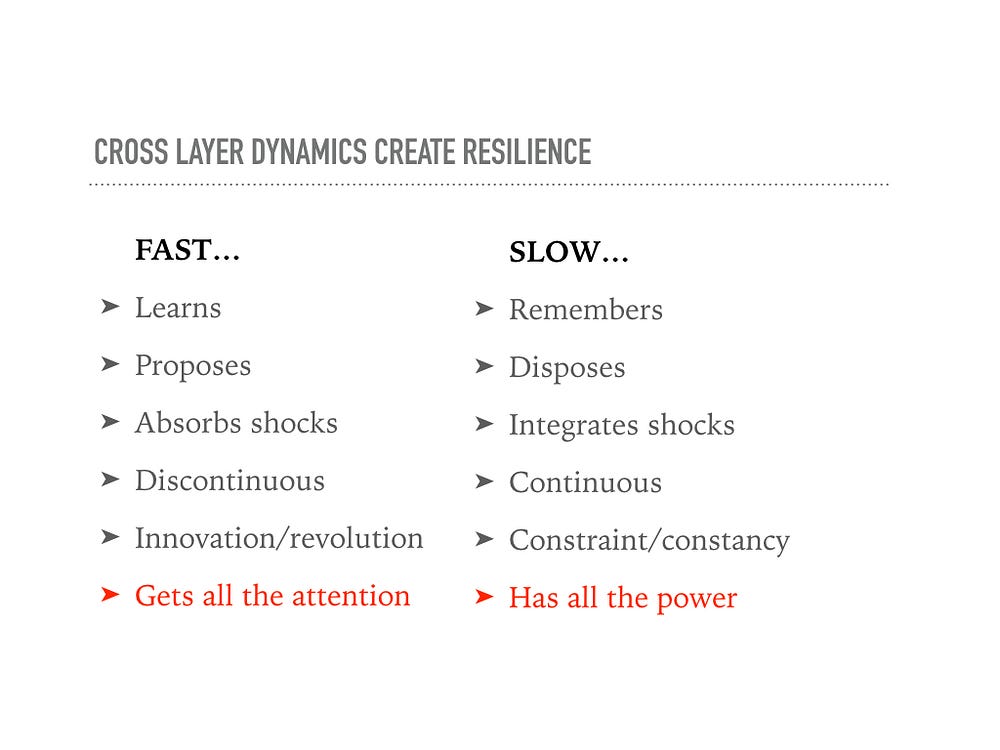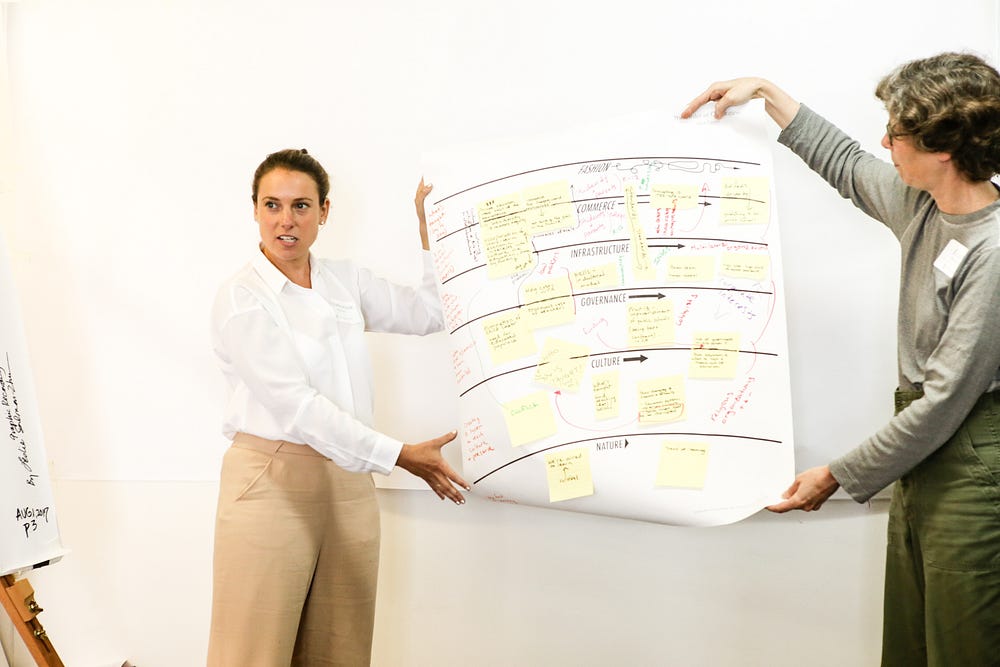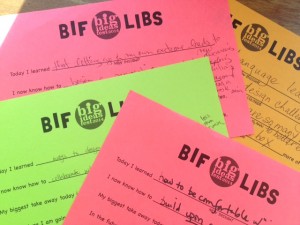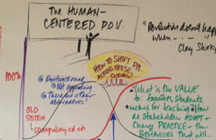A shared challenge facing educators, parents, and community leaders today is how to prepare students for a future that is becoming transformed by accelerating technologies, specifically artificial intelligence. As one recent headline reports, “Teachers want to prepare students for the jobs of the future—but feel stymied.” They’re stymied because they are focusing on a rapidly moving target. Jobs are undergoing an extreme makeover due to accelerating technologies. Entire categories of jobs are disappearing, while new ones are emerging in their place. The prescriptive approach by schools and career development programs that match discrete, present day skills with potential, future jobs won’t work in this emerging future. The direct connection has been broken.
 The rise of artificial intelligence, data mining, machine learning, robotics, and algorithms requires us to re-organize around another model for developing K12 graduates for future success in work and life. To navigate an emerging future shaped by AI and automation, students need to be the best humans they can be— creatively adaptive and strategic, with the ability to imagine future possibilities. The orienting focus of schools needs to shift from job – centered, skill requirements to student – centered, human development. As creative advisor Marc Zegans writes, educators must focus on “developing our students’ capacities as creative, adaptive, self-aware, collaborative, emotionally autonomous individuals—people who will take the helm in shaping lives that are distinctly and uniquely theirs.” To robustly navigate an emerging era of AI, students need scaffolding that helps them engage in an authentic process of imagining future selves and creatively adapting to unfolding worlds.
The rise of artificial intelligence, data mining, machine learning, robotics, and algorithms requires us to re-organize around another model for developing K12 graduates for future success in work and life. To navigate an emerging future shaped by AI and automation, students need to be the best humans they can be— creatively adaptive and strategic, with the ability to imagine future possibilities. The orienting focus of schools needs to shift from job – centered, skill requirements to student – centered, human development. As creative advisor Marc Zegans writes, educators must focus on “developing our students’ capacities as creative, adaptive, self-aware, collaborative, emotionally autonomous individuals—people who will take the helm in shaping lives that are distinctly and uniquely theirs.” To robustly navigate an emerging era of AI, students need scaffolding that helps them engage in an authentic process of imagining future selves and creatively adapting to unfolding worlds.
Saveri Consulting convened a workshop, Readiness Redefined from the inside Out, for a group of 30 independent school educators to discuss the components of a new framework for readiness and its implications for the strategic priorities of their schools. Some highlights include strategic re-framing of the following issues:
- Technology Integration: Help students partner with digital devices to augment their unique human performance.
- Social – Emotional Intelligence: Each learning experience should contribute to building a strong inner, core self.
- College: It’s a part of the journey, not the final destination.
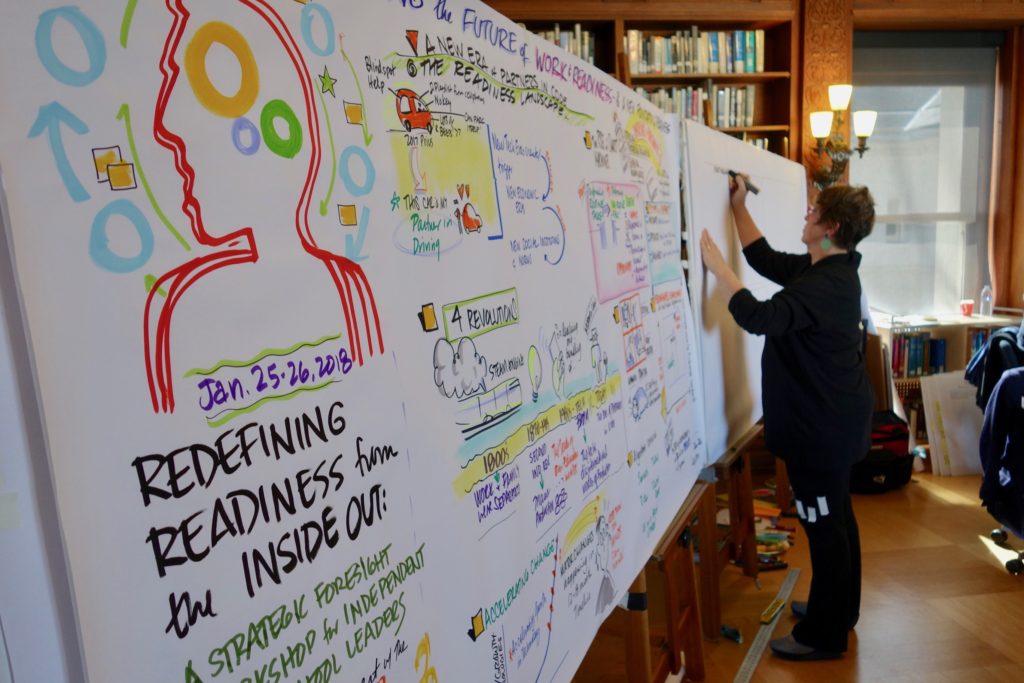
Technology Integration: Help students develop more purposeful and intentional relationships with digital devices to augment their unique human performance.
Advances in artificial intelligence, machine learning, robotics, and other forms of automation are leading to a rise in smart machines that will increasingly perform tasks that people carry out today. Once limited to performing routine, cognitive tasks (such as finding the lowest price or filing a claim) smart machines are getting better at performing non-routine, cognitive tasks (such as writing a quarterly earnings report or driving an autonomous vehicle). This shift toward more complex cognitive tasks will reshape the workplace and have profound impacts on middle class and professional jobs. Employers are rationalizing how to deploy technology and human contributions based on what each does best.
Rationale for Reconfiguring Jobs with Digital Technologies 
Technology implementation strategies should be designed to support students in performing complex cognitive work, rather than routine tasks. The economy will value individuals who demonstrate the ability to augment and leverage their unique human capabilities (creativity, persuasion, interpersonal relating, intuition, decision-making) through highly productive partnerships with powerful digital tools.
Schools need to focus on helping students become the best humans they can be in an increasingly technology-mediated world. This means helping students learn how to relate with technology in ways that augment their performance and fulfill their purpose as high-valued, human contributors. Students will need to be able to identify and harness the distinct technical capabilities of digital tools to help them achieve operational goals, such as increasing efficiency, reducing risk, and fulfilling mission critical objectives. They will need to learn how to intentionally select and partner with digital devices and robots in collaborative efforts that expand their knowledge, insight, and impact. And they will need to learn when and how to defer to AI and algorithms, and cede control of decisions, when digital computing and processing can outstrip human capacities. The ability to form such a range of human-machine relationships will be important for future student success at work and in navigating social and civic institutions.
Implications for schools:
Technology strategy should expose students to a variety of human – machine relationships that augment their performance. Schools need to examine carefully how their technology integration strategies help students develop various relationships with digital technologies that accelerate and expand their performance. Engagement with digital devices, robotics, software and algorithms should focus on helping students learn how to harness and apply powerful computation to achieve goals, to partner with technology in collaborative efforts that amplify human capacities, and to defer to computationally-based judgments and decisions. Students should learn how to select and apply digital tools, forming diverse relationships that support their personal, academic, and social development. What kinds of productive relationships do your students have with digital tools? How is the technology shaping the way students at your school think deeply, create novelty, relate with others, and reflect on their work and relationships?
Focus on computational thinking. STEM/STEAM programs should focus on helping students learn foundational problem discovery and solving skills, computational thinking, and not focus primarily coding which will be increasingly automated. Computational thinking involves four key techniques: problem decomposition, pattern recognition, abstraction, and algorithms. As educator Shuchi Grover suggests, these techniques can be integrated across subject matter and don’t necessarily require use of a computer. How well are the components of computational thinking embedded and integrated across various subject matter and learning experiences at your school?
Social – Emotional Intelligence: Each learning experience should contribute to building a strong inner, core self.
Foundational social-emotional skills and practices — individual awareness, social awareness, and self-discovery — are the engines of personal and professional growth, as well as essential contributors to wellbeing. Students will need to develop a strong social and emotional core to thrive in a future characterized by rapid technology-driven change; digital automation and augmentation; and globally connected markets and cultures. This foundation is essential for mastering many cognitive and meta-cognitive practices that facilitate success in the emerging workplace — such as navigating uncertainty, creating inclusive communities, self-advocacy, and creative thinking.
The recent report by KnowledgeWorks Foundation describes a framework for developing foundational skills and practices to help graduates leverage their unique human attributes in a world of increasing AI. The framework assumes a much larger vision, role, and curricular scope for social-emotional learning beyond discrete tools such as meditation or breathing practices. While these tools may be beneficial they are not sufficient for developing the full range of emotion-based skills necessary to manage the complexity and volatility of future social, civic, and professional life.

Millennial workers today rely on their capacities for individual awareness, social awareness, and continual self discovery to succeed in life and at work. These foundational capabilities will be increasingly important in the future.
“I had no guidance other than ‘Go figure it out.’ What makes you a valuable employee is the ability to champion something that you aren’t necessarily comfortable with and succeed outside your comfort zone.”
Senior software engineer, Digital Music Company, KWF interview.
“Confidence is important. Not just confidence in what you know, but confidence about what you don’t know. Being able to say, ‘I haven’t done this before, I have no idea, but I am going to figure it out.’” Mobile engineering manager, Cognitive Game Company, KWF interview.
Successful graduates will need a fine tuned internal compass of emotion skills to drive their aspirations, assess their situations and choices, and guide behaviors in ways that propel them forward on learning journeys.
Implications for schools:
Social – emotional learning needs to be at the center of academic programs and school community life. Students will benefit most when they are immersed in a school community that values and teaches emotional intelligence as a core curricular component rather than an add-on activity. This means teachers and parents should learn, practice, and model emotion skills. Students are more likely to achieve their goals if they learn how to recognize the ways their emotions shape their thinking, relationships, and behaviors and how to harness them in order to develop more positive social and academic outcomes. These stories from schools implementing the RULER program, developed at the Yale Center for Emotional Intelligence, demonstrate how an entire school community can become involved in building its emotional intelligence. Does your school approach SEL as an added enrichment or as a central component of student learning? Is SEL programming exclusively for students or does it include the entire school community? How might roles such as advisors, mentors, coaches, and wellness directors help promote social-emotional intelligence?
Robust SEL curriculum is agnostic to subject matter. SEL learning can be integrated across curriculum and incorporated into classroom and school-wide rituals and activities. Whether in literature or through collaborative math projects, students can practice their emotion skills and begin to use them as foundational elements in their academic and social growth. Teachers can facilitate this process by modeling social-emotional skills and by providing opportunities for students to use and reflect on these skills. How does your school integrate skills-based social emotional learning across its curriculum and school community? How might it be a through line across learning experiences at your school?
College: It’s a part of the journey, not the final destination.
College admission has become the de-facto goal of K12 education, narrowing the definition of, and metrics for, student success. The result is increased pressure on students to conform to a prescriptive high school path and one standard of success. The Stanford University based organization Challenge Success argues that, “society has become too focused on grades, test scores, and performance, leaving little time for kids to develop the necessary skills to become resilient, ethical, and motivated learners.” By focusing on college as ultimate destination, rather than part of the process of a longer journey, students lose the agency to create their own authentic narratives of success. And college becomes another stressful requirement to satisfy that is making students sick rather than a platform to learn the skills and practices to engage in emerging opportunities, explore unknowns, and take risks to build meaningful, healthy lives. Such practices are critical for success in a world of AI that is rapidly transforming the role of human contribution at work and in civic life.
Implications for schools:
Take college off the track. College preparation and counseling tend to place students on a tightly prescribed track of coursework, testing, and extracurricular activities. It is easy for students to lose their authentic ambitions and aspirations in the high pressured world of college admission standardized tests, low acceptance rates, and competition for financial aid. It appears to students that there is only one way to successfully progress after high school and college. Gap years have had some success in presenting alternatives, but more diverse post-secondary pathways would be even better. Shifting to a concept of building personal and professional development webs frames college and career options as more organic, abundant, and meaningful. As Kurt Fischer states, “There are no ladders. Instead, each one of us has our own web of development, where each new step we take opens up a whole new range of possibilities that unfold according to our individuality.” How are post-secondary options and pathways discussed and valued at your school? How well does your school prepare graduates to have agency in their lives and develop their own webs of resources and relationships for personal and professional development?
Extend the timeline beyond college and first job. Students today will be continuously learning, re-skilling, and creating their jobs and roles across industrial and professional ecosystems. Developing a big picture of work, civic life, and aspirational goals will help students create and seize opportunities. Personal and professional visioning, mentors, and apprenticeships can help students imagine and try out future selves. For one young millennial worker, her aspiration to help entrepreneurs has catalyzed her agency and motivation to take responsibility for her professional development, training needs, and job choices.
“Giving me the time to really think about what I was passionate about has allowed me to keep that guiding light of ‘I like helping entrepreneurs.’ This is what I enjoy doing. That’s why I’m in a position today where I love what I do and so I’m lucky in that way.” Marketing team member, Crowdfunding company, KWF Interview.
Schools could help students think longer term about their lives by helping them connect with people at various stages of their work lives and hearing their personal and professional development stories. Roadtrip Nation offers one example of this type of future work-life visioning. What opportunities do your students have to explore their future personal and professional selves through mentors, apprentices, job shadowing, visioning, and passion projects? How porous are the boundaries for your school community with the larger community and “real world” issues and events?
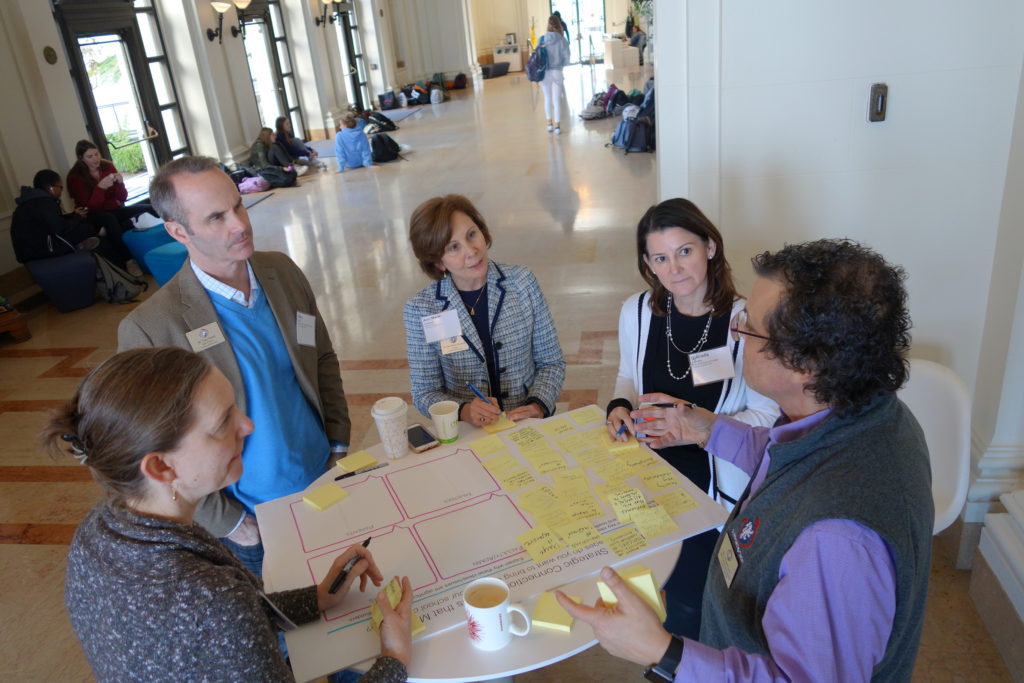
School leaders who stimulate open discussions about these three issues with their administration, faculty, parents, and students will begin to develop a shared vision of how their school can support meaningful student success in a rapidly changing world.


